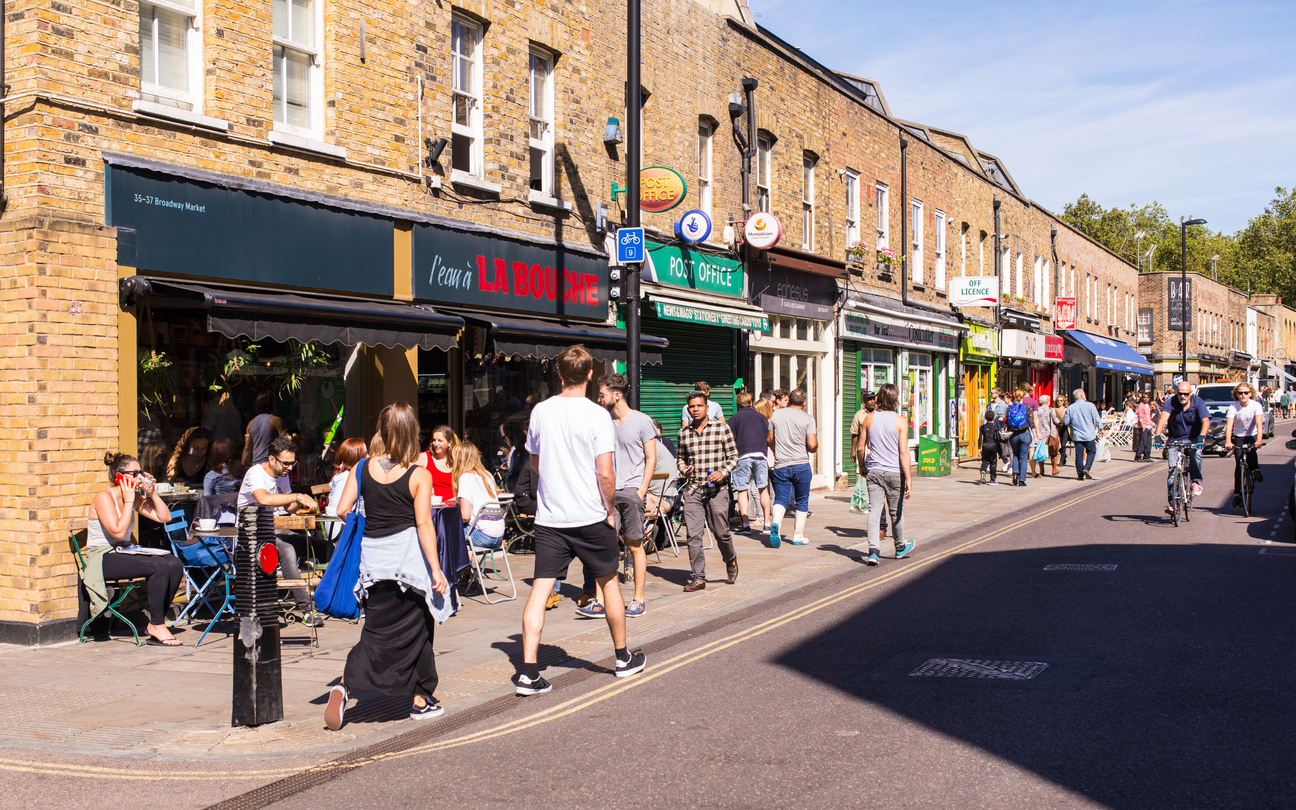
By Dr Sarah Montano
Birmingham Business School
In 20 years’ time, as a society, do we want to look back and wish that we had saved our high-streets and not missed our window of opportunity?
During the pandemic, one of the key changes in the retail sector was that consumers went back to shopping locally due to travel restrictions and, in doing so, rediscovered their local shopping areas.
The current ONS data shows that consumers have reduced their spending online, with online sales now 25.3% of total retail sales, from a pandemic high of 37.8% in January 2021. This illustrates that consumers have been keen to return to physical stores. Many consumers are also seeking a sustainable way to shop at local independent retailers, second hand and charity shops.
We take a broad interpretation of “local” to reflect diversity of cities and locations – local may mean your high street, main street, city centre or indeed the local parade of shops on your urbanisation. Birmingham itself, has a thriving independent retail sector with stores such as Loki, Miss Macaroon, On The Bread Line, The Clean Kilo and The Liquor Store. There is even a campaign called Independents Day UK (2nd and 3rd July 2022) that aims to support and promote independent retail.
How do we ensure continued success for our high streets?
In order for our local shopping areas to survive we are going to need to think collectively and work together as consumers, retailers, local councils and national governments – it may also mean different solutions for different areas. In his leadership bid this summer Rishi Sunak pledged to save the high street and acknowledged the importance of high streets to local communities.
Some ideas that we can consider are firstly, empty shops do not look welcoming in any area – so what could we have instead? Rents, local taxation and refit costs are expensive, so discounts and support for start-ups would attract innovators and entrepreneurs to the local area. The vast majority of our biggest brands started small many years ago, but where is the next M&S, Tesco or Superdry? Support for small businesses would attract new consumers and make empty spaces look vibrant.
Secondly, it is not just about retail. Local areas are about communities and allowing people to meet up and socialise. We need to think about ensuring that local areas offer a mix of services, cafes and community spaces to allow people to gather. We often talk about Third Places or places where people can gather and hang out and become and home-away-from-home (great examples of these are often seen in TV shows such as Friends, Coronation Street etc). With the continued rise in home working, people may seek out spaces where they can work near to home and socialise after work. We can think in terms of mixed-use spaces – where there may be a retail element, eating/drinking options and expand this to include community spaces such as exhibitions by local artists etc. By creating an experience – consumers are more likely to visit the venue.
Thirdly, how to attract young consumers? Newport has tried to bring in younger consumers by offering a mixed-use space and Europe’s biggest indoor market regeneration with a mix of street food, independent retail and workspaces. Being ‘Instagramable’ is a key trend right now and ensuring that the local retail and service offerings are thinking about social media opportunities then consumers will be keen to try and share on social media. We should be mindful that the cost-of-living crisis often affects young consumers disproportionally and the vast majority of consumers are concerned. Therefore, we should consider how people can still visit the local area but that venues are not expensive. Again, we return to the theme of mixed-use spaces – for example, allowing local community groups to take over spaces.
Fourthly, as consumers work more from home, national retailers that would usually be in city centres are considering opening outlets in local areas, for example, Pret a Manger are considering opening more stores in suburban areas. John Lewis is considering opening “shops-in-shops” or mini John Lewis’ in Waitrose. Well-known brand names will attract consumers to a local area and offer a convenient shopping experience.
In 20 years’ time, as a society, do we want to look back and wish that we had saved our high-streets and not missed our window of opportunity? Many of us will fondly remember the high streets of decades ago with their vibrant supportive communities and in times of crisis we need our communities, it is not too late – but we need to work together to save our high streets.
We owe it to ourselves as consumers, our communities, society and our future to fall back in love and stay in love with our local high street.
Join us for the ESRC Festival of Social Science on the 9th November 6pm to 7.30pm GMT, for our event.
Retail expert Dr Sarah Montano leads a lively panel of retailers and consumers to debate how we can fall in love with our local high street.
Register here: https://www.eventbrite.co.uk/e/how-to-fall-in-love-with-your-local-high-street-tickets-415890970087
- More about Dr Sarah Montano at the University of Birmingham
- More about Birmingham Business School
- Back to Business School Blog
The views and opinions expressed in this article are those of the author and do not necessarily reflect the official policy or position of the University of Birmingham.
